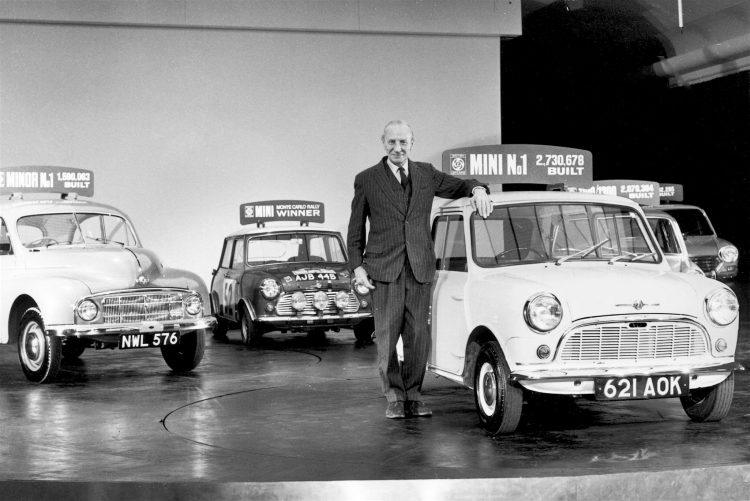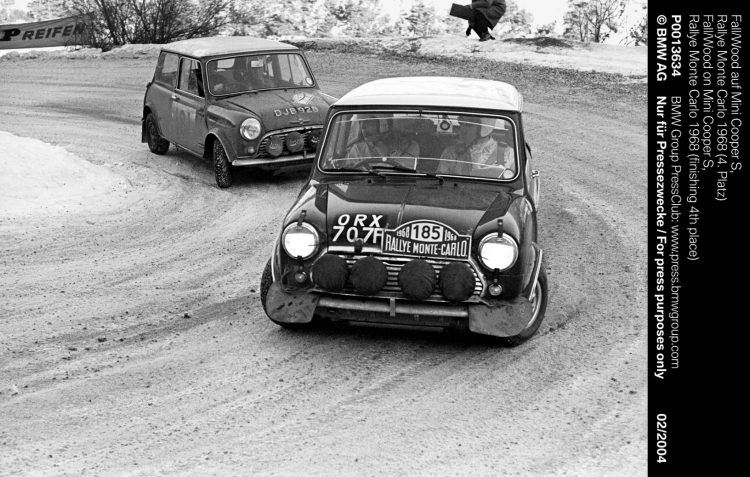- Mini enthusiasts will appreciate this insightful book packed full of wonderful photos.
- Author Giles Chapman takes us through the history of the world’s most fashionable car.
- Our Book Garage series showcases what every gearhead and enthusiast should add to their library.
I recently received another book in the mail from Motorbooks called Mini: 60 Years. It has a bright yellow cover, carrying on their tradition of primary colored-works that look great on your coffee table or shelf. The book is, coincidentally enough, rather like Mini. Don’t judge it by its cover because there’s a lot more here than meets the eye. When Mini hit the scene back in the early 1960s, most people thought it was a joke. Even after news got out that it most certainly wasn’t, many still looked down upon the cute little box on tiny wheels.
Anything But Basic
Most of those people were converted within a corner or two. The Mini was (and still is) small, light, decently-powered, nimble, and an absolute blast to drive. All of that is covered in loving detail by author Giles Chapman in Mini: 60 Years. It’s about the size of a large iPad, 175 pages long (including index), and anything but a simple, glossy look at one of the most revolutionary cars ever to hit the streets.
The first picture you see is of a first-gen Mini parked out front of Mary Quant’s Colour Shop on Carnaby Street, London. They say a picture is worth a thousand words, and this one comes pretty close to telling the whole story. While the Mini was positioned as a modern (by 1960s standards) update to the proverbial idea of “simple, cheap transportation,” it was perceived, and came across, as anything but basic. It was fashionable. All the cool kids had one in England. George Harrison had one. Brian Jones had one. Film stars and fashion models and various royals had one.
So did bankers and bricklayers and clerks and shop keepers. Mini hit a direct bullseye.
Mini: 60 Years Takes Us Through The Generations
In 12 chapters, Chapman breaks down not only the history of “cars for the people” – you know like VW bugs and Ford Model Ts and such – but how Mini’s design really shook things up. That very basic two-box look, coupled with a bunch of useful features. Putting its little engine up front and sideways driving the front wheels not only made the car frighteningly usable for its size, it also set a benchmark for what you can do with packaging. Everybody took note.
Although the Mini wasn’t a hatchback – it had a (tiny) trunk and a rear parcel shelf – it set the platform for what would be the acceptable car for first time drivers, urban dwellers, commuters. The VW Golf, Toyota Yaris, Honda Civic, and any other small sedan or hatchback wouldn’t exist today if Alec Issigonis didn’t have a radical re-think about what a car should be.
Mini: 60 Years traces the car’s design and beginnings (and outright fraught birth), but also gives a thorough examination of John Cooper’s turn at making the Mini into one of the most potent rally cars of its day. People thought Cooper (and Mini) were joking, but as rally driver Paddy Hopkirk put it; “A small road looks like a big road to a Mini.” Paddy should know. He won the Monte Carlo Rally in a Mini Cooper in 1964. And Minis went on to win again in 1965 and 1967.

Alec Issigonis poses for the camera. From Mini: 60 Years by Giles Chapman. Photo: Giles Chapman Library.
Related: Mini at 60. A personal view of how one small car changed the world.
A Perfect Book For Mini Fans
Chapman (no relation to Colin Chapman, by the by) also traces the slow decline of the original Mini. One of the downsides of being fashionable is that you can fall out of fashion. Practicality helped Mini carry on until the brand was revived by BMW who gave us the new MINI we see today (all caps this time around). This rebirth is thoroughly outlined and documented in Mini: 60 Years. Despite BMW’s influence, Chapman does a pretty good job of telling us why Mini is still veddy British and still veddy fun.
Mini: 60 Years is not big and shiny, nor is it overstuffed with facts and figures; rather like the Mini itself, it’s justthe right size and has just the right amount of hard (and fun) information. And there’s some truly great photos too. If you’re a car fan, you should own this. If you’re a Mini fan, you probably already do.
Tony Borroz has spent his entire life racing antique and sports cars. He is the author of Bricks & Bones: The Endearing Legacy and Nitty-Gritty Phenomenon of The Indy 500, available in paperback or Kindle format. Follow his work on Twitter: @TonyBorroz.
Mini: 60 Years by Giles Chapman
- Hardcover: 176 pages
- Publisher: Motorbooks; 1st edition (April 30, 2019)
- Language: English
- ISBN-10: 0760363994
- ISBN-13: 978-0760363997
- Product Dimensions: 9 x 0.8 x 10.2 inches
- Shipping Weight: 2.1 lbs.
Price at the time of this writing: $20.68 (Kindle) or $21.77 (Hardcover) on Amazon.
About The Author
Giles Chapman is an award-winning writer and commentator on the industry, history, and culture of cars. He has worked across a vast array of media for 35 years, which includes the writing 50 different books on a diverse range of subjects. Besides his own books, he’s worked as an editor, advisor, and consultant to many other authors and publishers. Chapman also founded the Royal Automobile Club’s Motoring Book of The Year Award, and he appears regularly on TV and radio commenting on motoring and automotive industry issues. He lives in Kent, UK.
from Automoblog.net https://www.automoblog.net/2019/09/15/automoblog-book-garage-mini-60-years/
via IFTTT
from Tumblr https://peternpalmer.tumblr.com/post/187734236866
via IFTTT

No comments:
Post a Comment